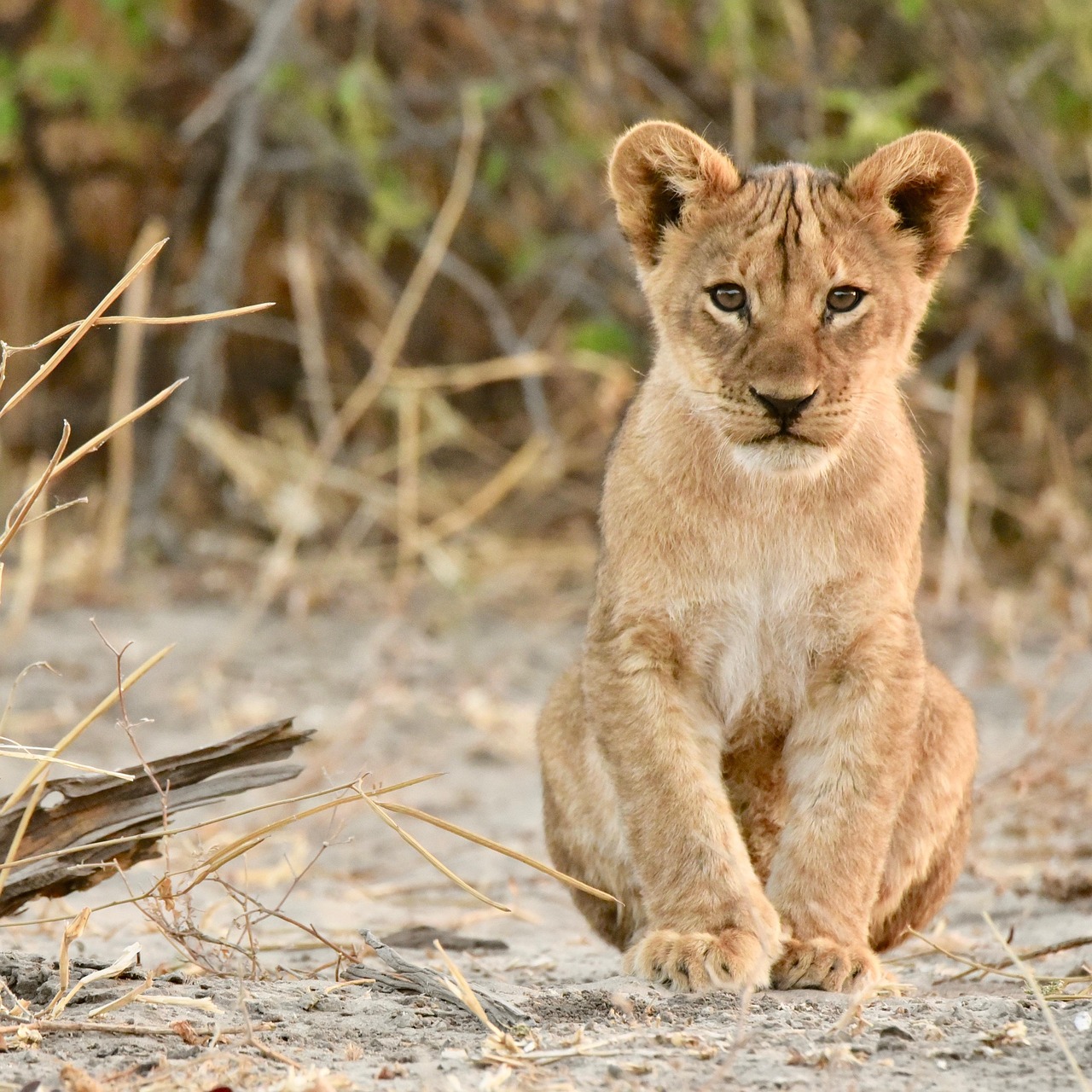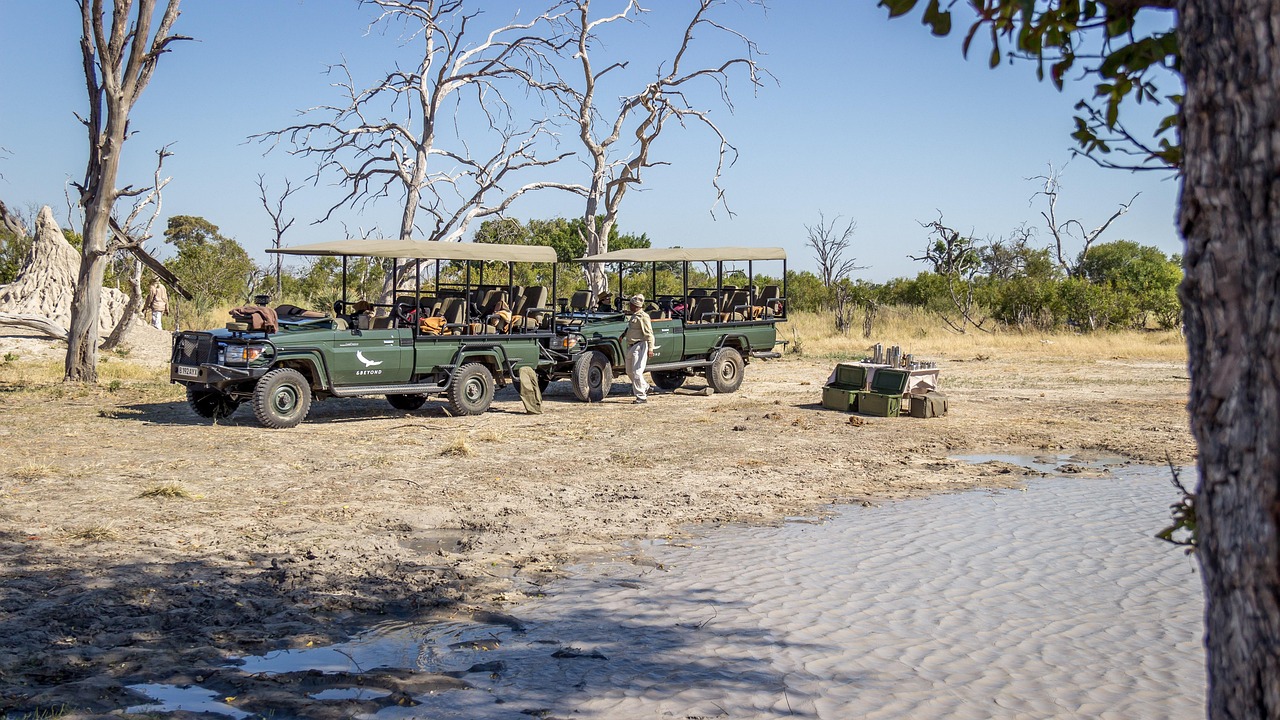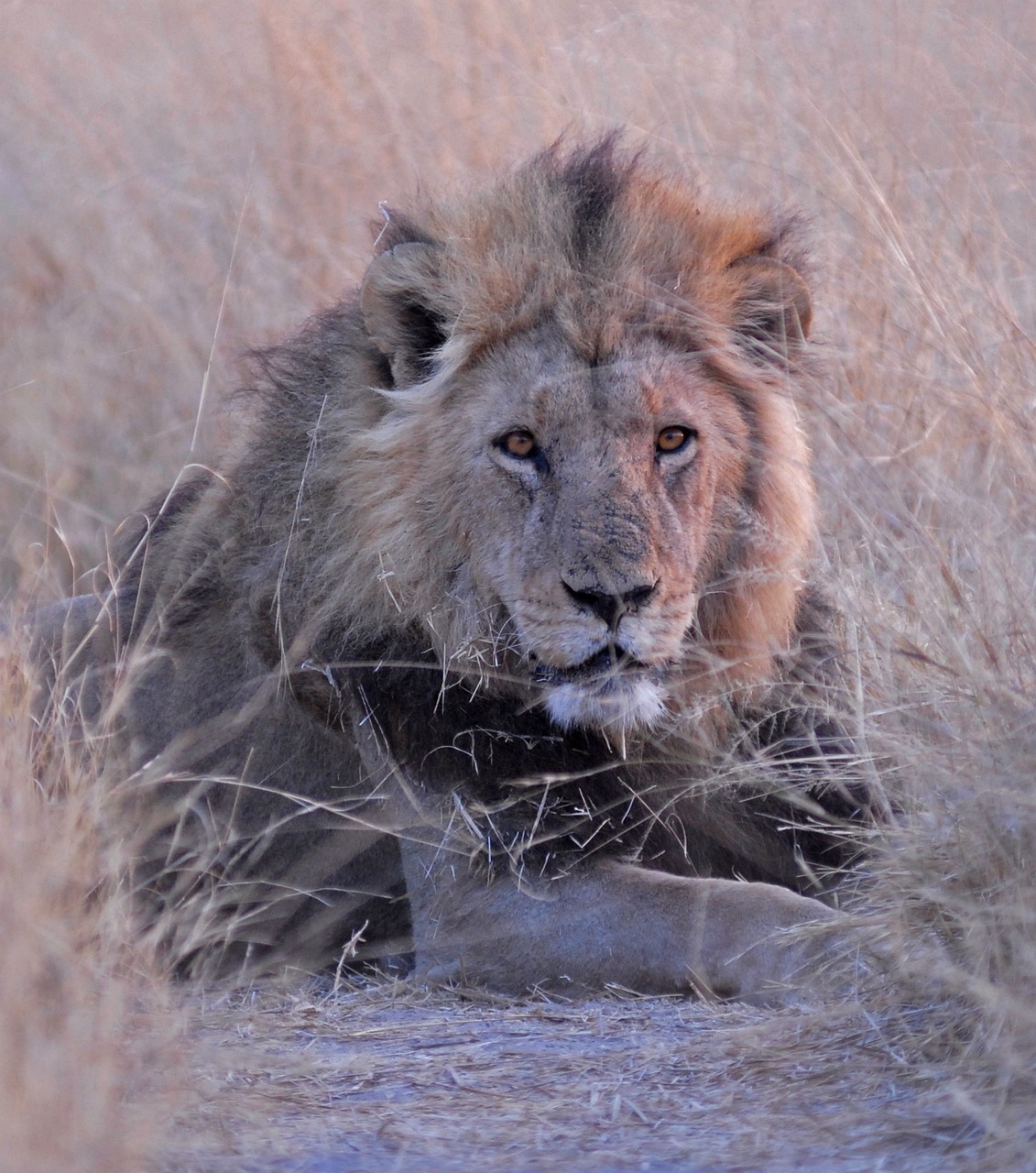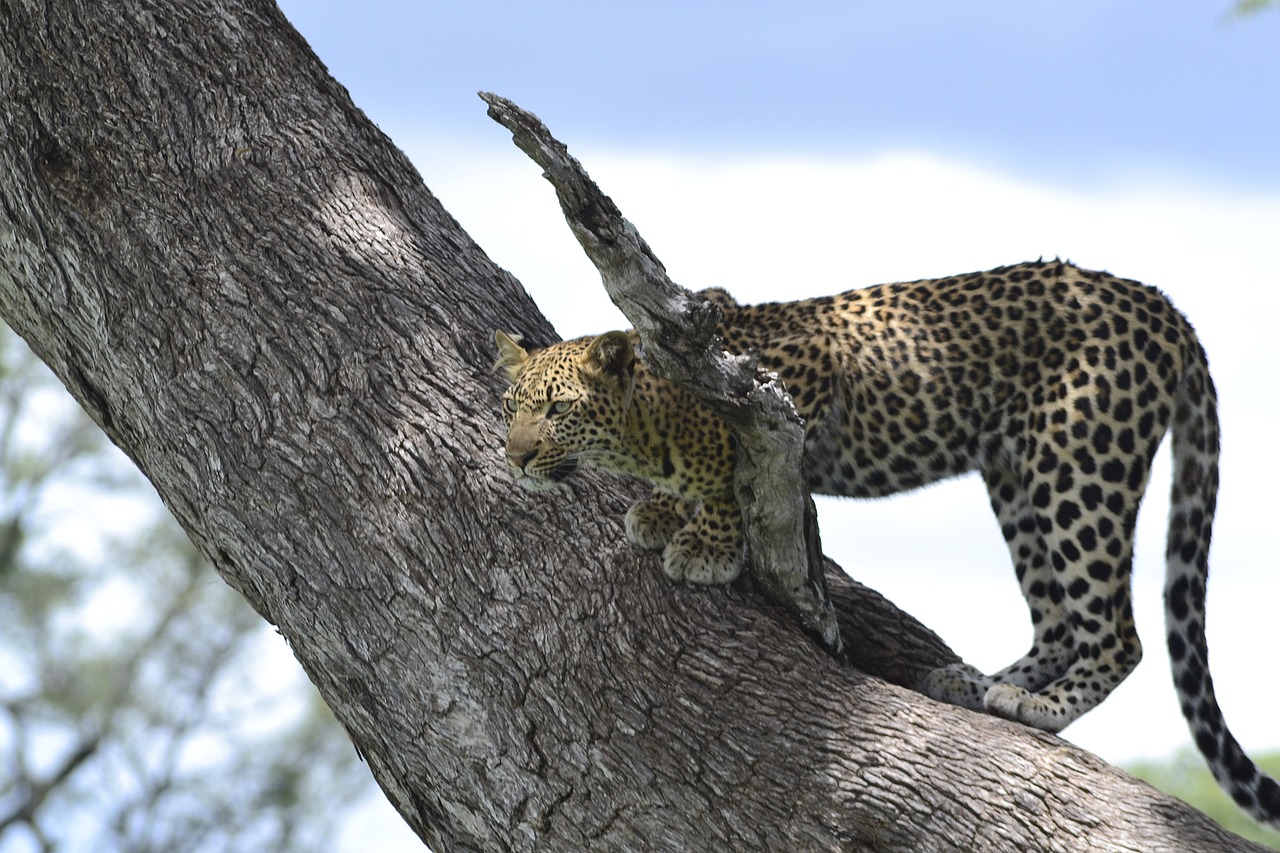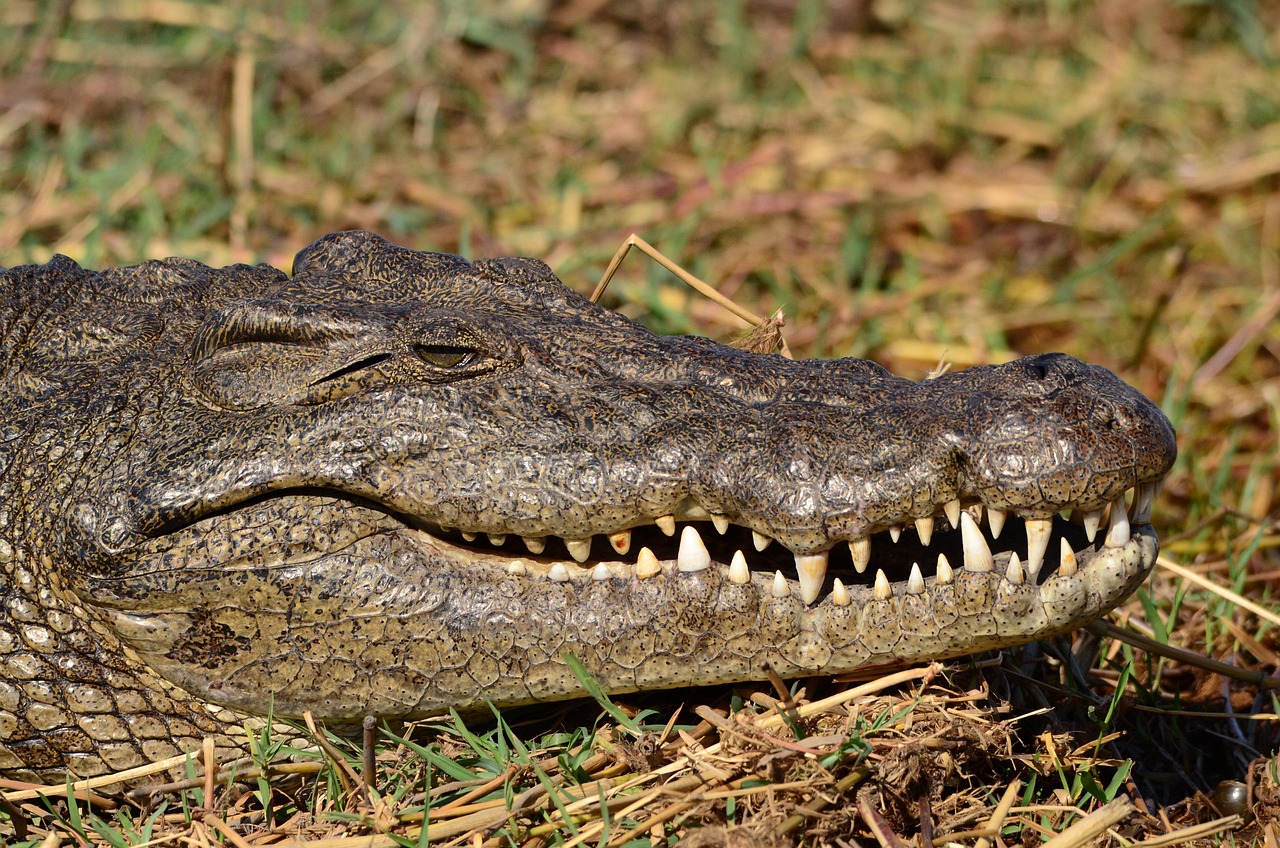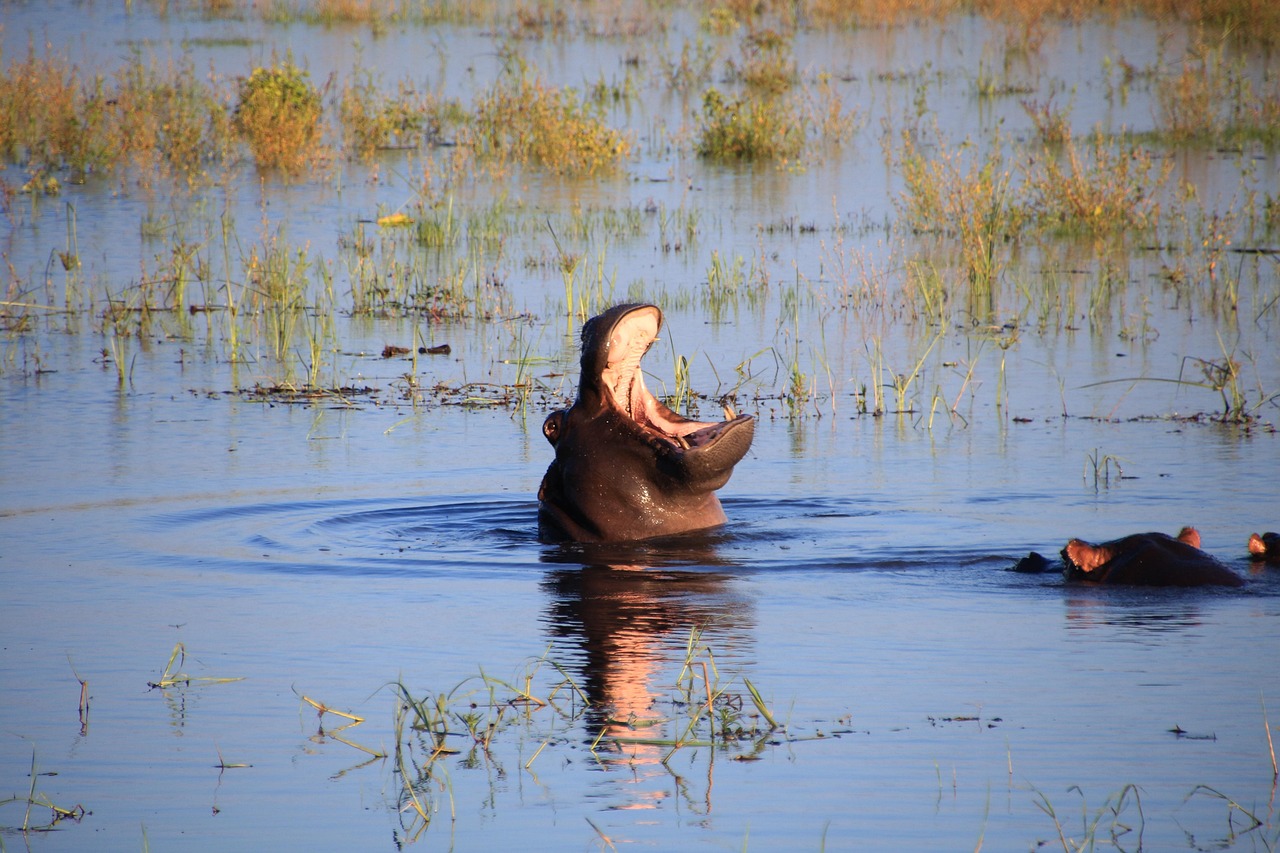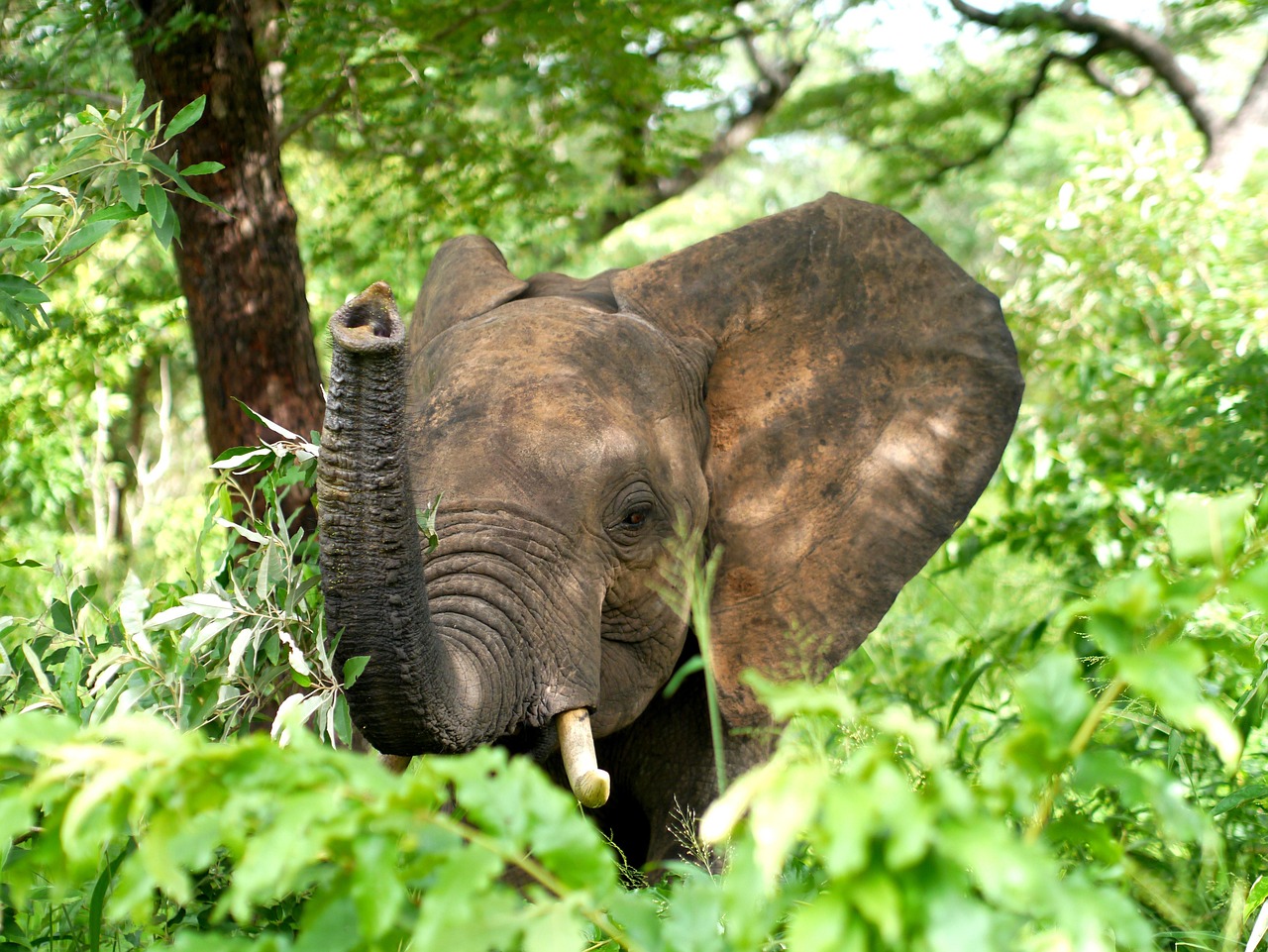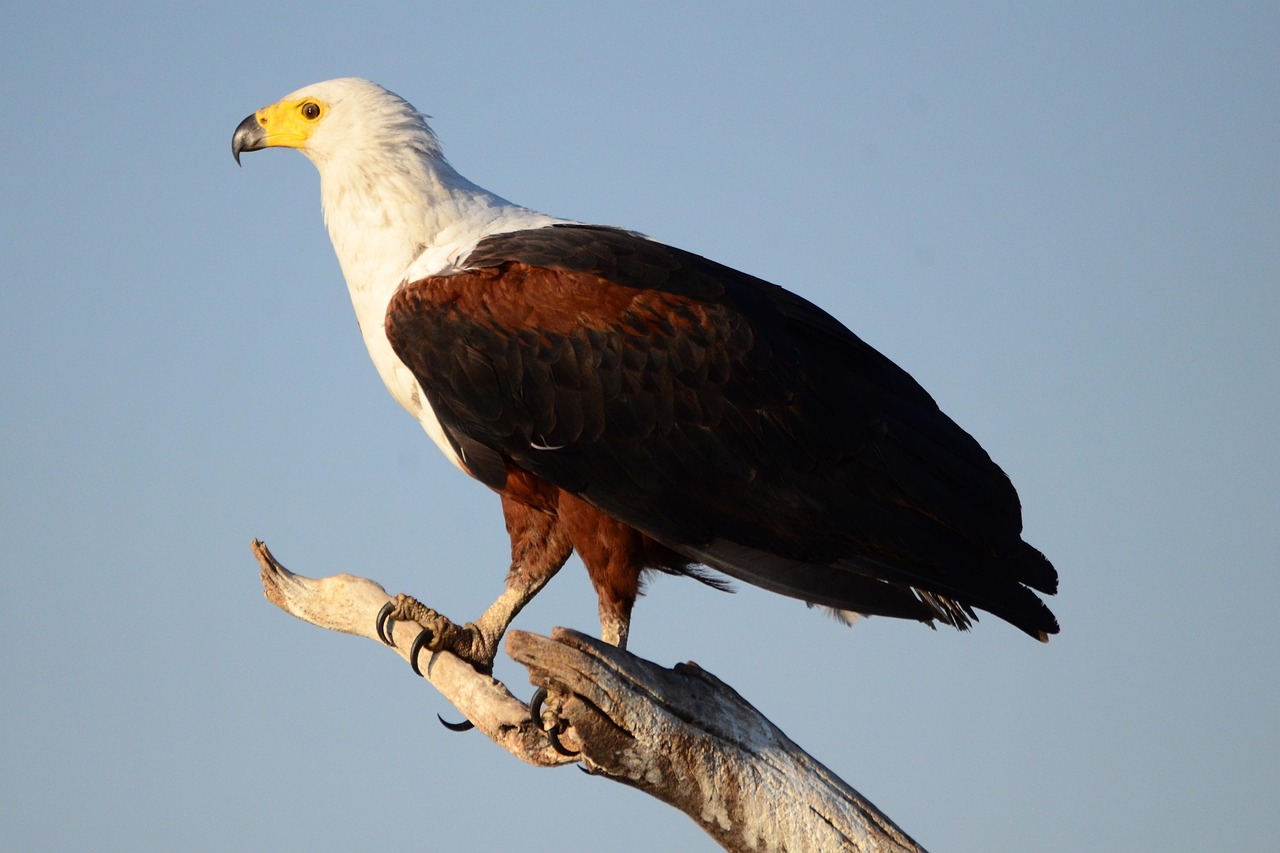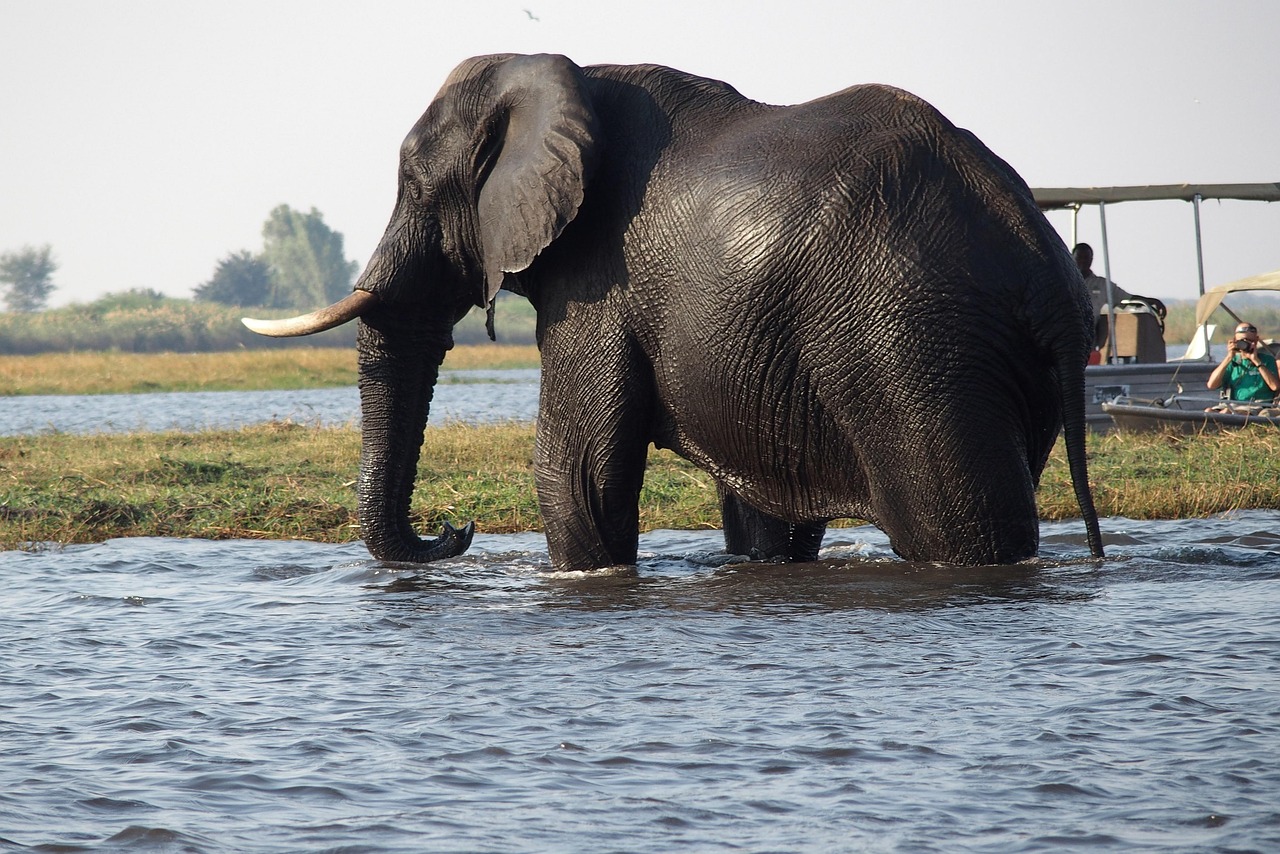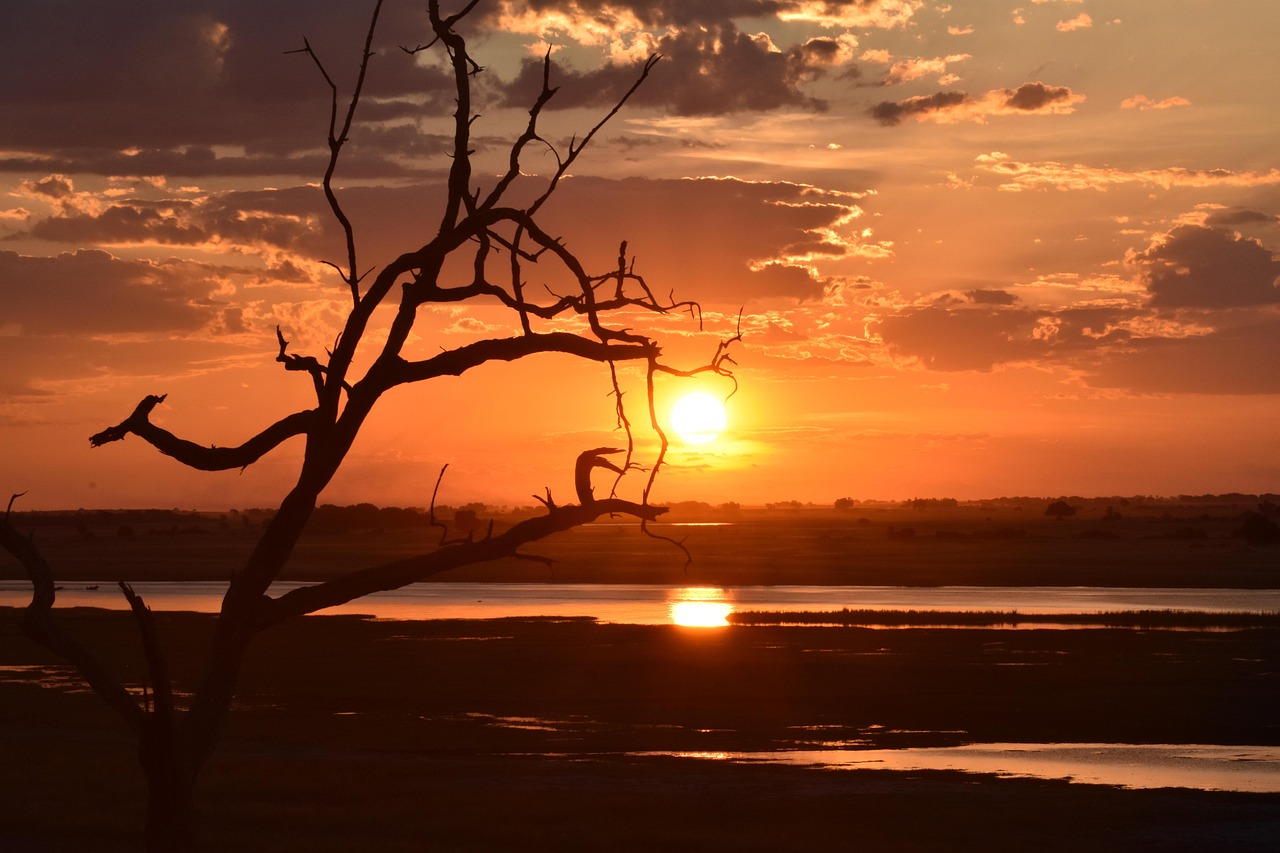
Chobe National Park
A Complete Travel Guide To Chobe National Park: Everything You Need To Know About Chobe National ParkChobe National Park
Overview
A Complete Travel Guide To Chobe National Park.
Everything you need to know about the Chobe National Park
Chobe National Park, located in northern Botswana, is renowned for its remarkable biodiversity and expansive landscapes. Established in 1967 as Botswana's first national park, it spans approximately 11,700 square kilometres, making it the country's third-largest park. The park is particularly famous for its substantial elephant population, which is estimated to be between 50,000 and 120,000 and is among the largest concentrations in Africa.
Chobe's diverse ecosystems include the lush Chobe Riverfront, the dynamic Savuti Marsh, the remote Linyanti wetlands, and the less-explored Nogatsaa woodlands. These varied habitats support many wildlife, such as lions, leopards, African wild dogs, buffalo, and numerous antelope species. The park is also a haven for bird enthusiasts, boasting over 500 recorded bird species.
Visitors can experience Chobe's wildlife through traditional game drives and unique boat safaris along the Chobe River, offering close-up views of animals gathering at the water's edge. The park's proximity to the town of Kasane and the nearby Victoria Falls makes it an accessible and compelling destination for travellers seeking an authentic African safari experience.
Explore the Chobe National Park Below:
Fast Facts
Accommodation
Everything you need to know about accommodation in Chobe National Park
Chobe offers a wide spectrum of safari accommodation—from luxury lodges on the riverfront to intimate tented camps deeper in the park and floating houseboats along the Chobe River. Guests can expect a balance of exclusive experiences, off-road flexibility (within permitted areas), and varying levels of privacy, depending on the remoteness of each camp. Each style brings its own rhythm and connection to wildlife and landscape.
You’ll find options that cater to travellers seeking high comfort and service, as well as more adventurous stays closer to nature. Some lodges are unfenced, allowing wildlife to roam near guest areas. Others are more contained, offering higher privacy and controlled guest movement. Riverfront properties emphasise boat safaris, scenic views, and sunset cruises. More remote tented camps focus on immersive land-based game drives, night safaris, and a raw wilderness feel. Houseboats add a unique dimension—sleeping on water, waking to the sounds of the river, and navigating water routes as your safari path.
Expert tip: For a comprehensive experience, consider splitting your stay between a riverfront lodge and a more immersive tented camp.
Explore Accommodation In Chobe National Park Below:
Activities
Everything you need to know about safari activities in Chobe National Park:
In Chobe, guests can enjoy game drives, boat safaris, photographic safaris, and cultural excursions, often in combination with one another. Whether you prefer watching elephants along the riverfront, tracking predators in the interior, or capturing moments from a boat deck, Chobe offers a rich mix of safari experiences to suit your interests and style.
Expert tip: book both a river cruise and a land game drive to see wildlife from two perspectives — especially in the dry season.
Explore activities available in Chobe National Park:
Why Visit
This is why you should visit Chobe National Park:
Chobe delivers a compelling mix of massive elephant herds, diverse habitat from river to marsh, and the chance to explore by both land and water. It suits travellers who want wildlife intensity, river safari variety, and a genuine taste of Botswana’s wilderness.
Expert tip: include both the riverfront zone and Savuti or Linyanti in your itinerary — you’ll see very different wildlife dynamics and landscapes in one trip.
A Deeper Understanding Of Why You Should Visit Chobe National Park
Chobe offers some of Africa’s highest wildlife densities, especially during the dry season when animals concentrate along rivers. The combination of elephant mega-herds, predator hotspots, and riverine ecosystems makes for varied and powerful safari moments. The park is well located, making it accessible yet still feels wild.
Elephant spectacle
Chobe is famed for having one of the world’s largest concentrations of African bush elephants. The riverfront becomes a dramatic stage as herds cross, drink, mud-bathe, and interact daily.
Water-based safari access
Not many national parks allow seamless transitions between land and river safaris — in Chobe, you can drift quietly beside hippo pods, see crocodiles basking, and approach game from the water’s edge.
Habitat diversity & predator zones
From dense woodland to floodplains to marsh and savannah, Chobe supports rare antelope species and active predator zones (especially in Savuti and Linyanti). That ecological variety means your safari won’t feel monotone — you’ll see contrasting scenes and different wildlife behaviour.
How long should you stay in this region
This is how long you should stay at Chobe National Park.
If Chobe is a main focus, plan 3–4 nights to fully enjoy both the riverfront and interior zones. If it’s one stop in a broader multi-country itinerary, 2–3 nights is sufficient to sample highlights without overextending travel time.
Within Botswana:
3–4 nights. Chobe is relatively accessible, but to see both the busy riverfront and the quieter interior, such as Savuti or Linyanti, you need a few nights. This duration strikes a balance between wildlife opportunities and travel costs.
Beyond Botswana:
2–3 nights. When combining Chobe with other countries, this allows for sufficient time for both land and boat safaris, without incurring too many transit days in your itinerary.
Expert tip: Try splitting your stay between the riverfront and an interior section—so you don’t miss either side of Chobe’s wildlife action.
A Deeper Understanding Of How Long To Stay In Chobe National Park
Chobe spans roughly 11,700 km², with distinct zones that offer very different wildlife moods. Staying 3–4 nights allows time for morning and evening game drives, boat cruises, and the chance to reposition between zones without feeling rushed. In a shorter stay, you risk spending too much time in transit or missing quieter predator scenes. Shorter stays work best if you prioritise convenience over exhaustive coverage.
National Parks
Continue your safari planning journey across Africa’s top national parks
Not sure if Chobe National Park is your perfect fit? Click below to explore and compare other safari national parks.
Safety
Chobe National Park in Botswana is generally considered a safe destination for travellers. While the park's wildlife and natural environment require caution, incidents involving tourists are rare. By adhering to park regulations and following guidance from experienced guides, visitors can enjoy a secure and memorable safari experience.
Expert tip: Always stay inside your vehicle during game drives and only exit at designated areas.
A deeper understanding of safety
Wildlife Safety: Chobe is home to a diverse range of wildlife, including elephants, lions, and hippos. While these animals are a highlight of any safari, it's crucial to maintain a safe distance and avoid any actions that could be perceived as threatening. Never approach or feed wild animals, and always follow your guide's instructions.
Health Precautions: Chobe lies in a high-risk malaria zone, especially during the rainy season. Travelers should consult healthcare providers about antimalarial medication before the trip. Using insect repellent containing at least 30% DEET and wearing long-sleeved clothing during dawn and dusk can further reduce the risk.
Urban Safety: The nearby town of Kasane serves as a gateway to Chobe National Park and is generally safe for tourists. However, standard precautions apply: keep valuables secure, avoid walking alone at night, and be cautious in crowded areas to prevent petty theft.
Self-Driving Considerations: For those opting to self-drive, it's essential to be prepared for challenging road conditions, especially during the wet season when roads can become muddy and difficult to navigate. Ensure your vehicle is equipped for off-road conditions, and always inform someone of your travel plans.
Explore safety information for wildlife areas and cities in Chobe National Park below:
Meta title: Safety in Chobe National Park – What Travelers Should Know
Meta description: Learn about staying safe in Botswana's Chobe National Park. Get tips on wildlife encounters, health precautions, and urban safety for a secure safari experience.
Malaria
Chobe National Park is a malaria-endemic area with higher transmission risk during the rainy season (November to April). Antimalarial medication and mosquito bite prevention are strongly recommended for all visitors.
- Malaria Area: Yes
- Malaria Risk Level in Chobe National Park: 🔴 High
Expert tip: As your healthcare provider advises, begin antimalarial medication 1–2 days before entering the park and continue for the recommended duration after departure, as your healthcare provider advises.
A deeper understanding of malaria
Chobe National Park, situated in northern Botswana, is within a high-risk malaria zone, particularly during the rainy season from November to April. The dry season (May to October) sees a reduced but still present risk, as mosquitoes can breed in residual water sources.
Antimalarial prophylaxis is advised for all travellers. Depending on individual health profiles and travel plans, options include atovaquone-proguanil (Malarone), doxycycline, or mefloquine. Consult a healthcare professional to determine the most suitable medication.
In addition to medication, preventive measures are crucial:
- Wear long-sleeved clothing and trousers, especially during dawn and dusk when mosquitoes are most active.
- Apply insect repellent containing at least 30% DEET to exposed skin.
- Sleep under insecticide-treated mosquito nets or in accommodations with proper screening.
Vaccinations recommended for travellers to Botswana include:
- Hepatitis A and B
- Typhoid
- Tetanus, Diphtheria, and Polio (DTP)
- Rabies, for those with potential exposure to animals
- Yellow Fever, if arriving from or transiting through a country with a risk of yellow fever transmission
Ensure all routine vaccinations are current and consult a travel health specialist at least 4–6 weeks before departure to receive appropriate immunisations and advice.
Malaria Risk by Month in Chobe National Park
Table legend: 🟢 Malaria Free, 🟡 Low Risk Of Malaria, 🟠 Medium Risk Of Malaria, 🔴 High Risk Of Malaria
- January: 🔴 High Risk Of Malaria
- February: 🔴 High Risk Of Malaria
- March: 🔴 High Risk Of Malaria
- April: 🔴 High Risk Of Malaria
- May: 🟠 Medium Risk Of Malaria
- June: 🟡 Low Risk Of Malaria
- July: 🟡 Low Risk Of Malaria
- August: 🟡 Low Risk Of Malaria
- September: 🟡 Low Risk Of Malaria
- October: 🟠 Medium Risk Of Malaria
- November: 🔴 High Risk Of Malaria
- December: 🔴 High Risk Of Malaria
Explore malaria and vaccination information for Chobe National Park below:
Meta title: Malaria Risk and Vaccination Guide for Chobe National Park
Meta Description: Planning a trip to Chobe National Park? Learn about malaria risks, recommended vaccinations, and essential health precautions to ensure a safe and enjoyable safari experience.
Getting Here
Chobe National Park is easily accessible via Kasane International Airport (BBK), located just minutes from the park's entrance. Daily flights from Johannesburg and Victoria Falls make it a convenient destination for travellers.
Main point of entry to Chobe National Park: Kasane International Airport (BBK)
- Effort getting to Chobe National Park: 🟢 Easy
- Effort getting around Chobe National Park: 🟡 Medium
- Best ways to get around Chobe National Park: ✈️ Air; 🚙 Transfers; 🚗 Self Drive; 🚤 Boat
Expert tip: If you're arriving from Victoria Falls or Livingstone, consider a road transfer to Kasane—it's a scenic 1.5-hour drive and often more cost-effective than flying.
A deeper understanding of getting here
By Air:
Kasane International Airport (BBK) is the primary gateway to Chobe National Park, approximately 4 km from Kasane town and Sedudu Gate. Daily flights operate from Johannesburg (JNB) via Airlink and from Victoria Falls (VFA) and Livingstone (LVI) through regional carriers. Additionally, Air Botswana offers flights from Gaborone (GBE) on select days.
By Road:
Chobe is accessible by road from various points:
- Victoria Falls, Zimbabwe: Approximately 70 km (1.5-hour drive) via the Kazungula border post.
- Livingstone, Zambia: Similar distance and travel time, crossing the Kazungula Bridge.
- Maun, Botswana: About 600 km (7-8 hours) via the A3 and A33 highways.
- Gaborone, Botswana: Roughly 925 km (11-hour drive) via the A1 and A33 highways.
A 4x4 vehicle is recommended for navigating the park's internal roads, especially during the rainy season.
Transfers and Accessibility:
Most lodges and camps offer airport transfers from Kasane. For remote areas like Savuti or Linyanti, charter flights to local airstrips (e.g., Savuti Airstrip) are common, followed by game drive transfers to accommodations.
Explore getting here in Chobe National Park below:
Meta title: How to Get to Chobe National Park – Travel Guide
Meta description: Discover the best ways to reach Botswana's Chobe National Park. Learn about flights to Kasane, road transfers from Victoria Falls, and transportation options within the park.
When To Go
May to October is the dry season in Chobe National Park, offering excellent wildlife viewing as animals congregate near water sources. For bird enthusiasts, the wet season from November to March provides abundant birdlife, including migratory species.
- High season: July to October
- Low season: November to June
Expert tip: For optimal wildlife sightings with fewer crowds, consider visiting in May or June, when the park is lush and animals begin gathering near water sources.
A deeper understanding of the best time to visit
Chobe National Park offers year-round safari experiences, each season presenting unique opportunities. The dry season (May to October) is ideal for wildlife viewing, as animals gather along the Chobe River due to scarce water elsewhere. However, October can be extremely hot, reaching up to 36°C (97°F).
The wet season (November to March) brings lush landscapes and is the best time for birdwatching, with numerous migratory species present. While some roads may become challenging due to rain, this period offers fewer tourists and lower accommodation rates.
Monthly Table:
| Month | Weather | Wildlife Viewing | Birdwatching | Temperature |
|---|---|---|---|---|
| January | 🌧️ | ✅ | 🐦🐦🐦 | 🔥 |
| February | 🌧️ | ✅ | 🐦🐦🐦 | 🔥 |
| March | 🌧️ | ✅ | 🐦🐦🐦 | 🔥 |
| April | 🌤️ | ✅✅ | 🐦🐦 | ☀️ |
| May | ☀️ | ✅✅✅ | 🐦🐦 | ☀️ |
| June | ☀️ | ✅✅✅ | 🐦 | ❄️ |
| July | ☀️ | ✅✅✅ | 🐦 | ❄️ |
| August | ☀️ | ✅✅✅ | 🐦 | ☀️ |
| September | ☀️ | ✅✅✅ | 🐦 | 🔥 |
| October | ☀️ | ✅✅✅ | 🐦 | 🔥 |
| November | 🌤️ | ✅✅ | 🐦🐦 | 🔥 |
| December | 🌧️ | ✅ | 🐦🐦🐦 | 🔥 |
Table Legend:
- Weather: ⛈️ Thunderstorms, 🌧️ Rain, 🌤️ Partly Cloudy, ☀️ Dry
- Wildlife Viewing: ✅ Average, ✅✅ Good, ✅✅✅ Great
- Birdwatching: 🐦 Average, 🐦🐦 Good, 🐦🐦🐦 Great
- Temperature: ❄️ Cold, ☀️ Warm, 🔥 Hot
Explore the best time to visit Chobe National Park below:
Meta title: Best Time to Visit Chobe National Park – Seasonal Safari Guide
Meta Description: Discover the optimal times to visit Chobe National Park for wildlife viewing and birdwatching. Learn about seasonal highlights, weather patterns, and safari planning tips.
Weather and climate
Chobe National Park experiences a semi-arid climate with two distinct seasons: a wet season from November to March and a dry season from April to October. The dry season is ideal for wildlife viewing, as animals congregate near water sources. The wet season brings lush landscapes and is excellent for birdwatching.
- Summer: November to March. Average temperatures range from 20°C to 35°C (68°F to 95°F). Rainfall is higher, with monthly averages between 100mm and 224mm (3.9in and 8.8in).
- Winter: April to October. Average temperatures range from 5°C to 28°C (41°F to 82°F). Monthly rainfall is minimal, often less than 10mm (0.4in) monthly.
Expert tip: If you're planning a safari, consider visiting during the dry season (May to October) for optimal wildlife sightings. However, pack warm clothing for early morning game drives, as temperatures can be pretty cool.
A deeper understanding of Weather and Climate
Significant seasonal variations characterise Chobe National Park's climate. During the wet season, the park transforms into a verdant landscape, attracting many bird species, including migratory birds. This period is marked by high humidity and afternoon thunderstorms, with temperatures often exceeding 35°C (95°F).
The dry season offers clear skies and cooler temperatures, especially in the early mornings and evenings. This is the prime time for game viewing, as wildlife gathers around the Chobe River and other water sources. Daytime temperatures are comfortable, ranging between 20°C and 28°C (68°F and 82°F), while nights can be chilly, dropping to 5°C (41°F) in some areas.
Understanding these climatic patterns is crucial for planning your visit, and ensuring you pack appropriately to maximise your safari experience.
Table showing weather and climate in Chobe National Park
| Month | Avg Low Temp (°C/°F) | Avg High Temp (°C/°F) | Precipitation Chance (%) | Avg Rainfall (mm/in) | Rainy Days | Humidity (%) | UV Index |
|---|---|---|---|---|---|---|---|
| January | 20 / 68 | 32 / 90 | 65% | 120 / 4.7 | 15 | 65 | 11 |
| February | 20 / 68 | 31 / 88 | 60% | 110 / 4.3 | 13 | 65 | 11 |
| March | 19 / 66 | 31 / 88 | 55% | 95 / 3.7 | 10 | 60 | 10 |
| April | 17 / 63 | 30 / 86 | 30% | 28 / 1.1 | 5 | 50 | 9 |
| May | 12 / 54 | 28 / 82 | 10% | 5 / 0.2 | 2 | 45 | 8 |
| June | 8 / 46 | 26 / 79 | 5% | 1 / 0.04 | 1 | 40 | 7 |
| July | 7 / 45 | 26 / 79 | 5% | 0 / 0.0 | 0 | 40 | 7 |
| August | 10 / 50 | 29 / 84 | 5% | 1 / 0.04 | 0 | 35 | 8 |
| September | 15 / 59 | 34 / 93 | 10% | 5 / 0.2 | 1 | 30 | 10 |
| October | 19 / 66 | 38 / 100 | 20% | 8 / 0.3 | 3 | 35 | 11 |
| November | 21 / 70 | 35 / 95 | 40% | 63 / 2.5 | 8 | 50 | 11 |
| December | 21 / 70 | 33 / 91 | 60% | 122 / 4.8 | 12 | 60 | 11 |
Meta title: Weather and Climate in Chobe National Park – Seasonal Guide
Meta description: Discover the seasonal weather patterns of Chobe National Park, Botswana. Learn about temperature ranges, rainfall, and the best times for wildlife viewing and birdwatching.
Explore Weather and Climate in Chobe National Park below:
Airports and Airstrips
Kasane International Airport (BBK) is the primary gateway to Chobe National Park, situated just a few kilometres from the park's entrance. Daily flights from Johannesburg, Gaborone, and Victoria Falls make it easily accessible. For remote lodges, charter flights land at airstrips like Savuti and Impalila Island, offering direct access to the heart of the wilderness.
- Main Airport/s in Chobe National Park: Kasane International Airport (BBK)
Expert tip: If you're staying at a lodge within the park, consider booking a charter flight directly to nearby airstrips like Savuti to minimise transfer times and maximise your safari experience.
A deeper understanding of airports and airstrips in Chobe National Park
Kasane International Airport (BBK) is the central air hub for visitors to Chobe National Park, located just outside the town of Kasane. It offers daily flights from major cities like Johannesburg and Gaborone, and is in close proximity to Victoria Falls and Livingstone airports, making it a convenient entry point for international travellers.
For those venturing deeper into the park, charter flights are available to airstrips such as Savuti Airstrip, which serves the remote Savuti region, and Impalila Island Airstrip, providing access to lodges along the Chobe River. Small aircraft typically use these airstrips and offer a unique aerial perspective of the park's diverse landscapes.
Most lodges in and around Chobe National Park offer transfer services from these airstrips, ensuring a seamless journey from air to safari. It's advisable to coordinate with your lodge or tour operator to arrange these transfers in advance.
Explore airports and airstrips in Chobe National Park below:
Meta title: Airports and Airstrips in Chobe National Park – Your Guide to Flying In
Meta description: Learn how to access Chobe National Park via Kasane International Airport and nearby airstrips like Savuti and Impalila Island. Then, plan your safari with ease.
Cities and Towns
Kasane is the primary town serving as the gateway to Chobe National Park. Situated along the Chobe River, it offers visitors essential amenities, accommodations, and access points for visitors. Nearby villages like Kazungula, Satau, and Parakarungu provide cultural insights and local experiences.
- Main City / Town: Kasane
Expert tip: Consider staying in Kasane for convenient access to park entrances and river cruises. Engaging with local communities in surrounding villages can enrich your understanding of the region's culture.
A deeper understanding of cities and towns in Chobe National Park
Kasane is the northern entrance to Chobe National Park and is equipped with an international airport, making it a central tourist hub. The town provides various lodging options, restaurants, and tour operators. Kazungula, located approximately 8 km east of Kasane, is notable for the Kazungula Bridge, which connects Botswana to Zambia and facilitates regional travel. Villages such as Satau and Parakarungu offer authentic cultural experiences, including traditional dances and crafts, reflecting the rich heritage of the Basubiya people. These communities contribute to the diverse tapestry of life surrounding Chobe National Park.
Explore cities and towns in Chobe National Park below:
Meta title: Cities and Towns in Chobe National Park
Meta description: Discover the key towns and villages within Chobe National Park, including Kasane, Kazungula, Satau, and Parakarungu, and learn how they enhance your safari experience.
Birds
Birds of Chobe National Park
Chobe National Park is a haven for bird enthusiasts, boasting over 450 recorded bird species. From the vibrant African skimmer to the elusive Pel's fishing-owl, the park offers a diverse avian experience. The best birdwatching period is during the wet season, from November to April, when migratory birds arrive and resident species display their breeding plumage.
- Birds in this region: African skimmer, Pel's fishing-owl, Slaty egret, African fish eagle, Carmine bee-eater, Malachite kingfisher, Kori bustard, Rosy-throated longclaw, Southern ground hornbill, African spoonbill.
- Best months for birding: November to April.
Expert tip: For optimal birdwatching, consider a boat safari along the Chobe River in the early morning or late afternoon for optimal birdwatching. This approach offers close encounters with waterbirds and raptors, and the soft lighting enhances photography opportunities.
A deeper understanding of birds in Chobe National Park
Chobe National Park's diverse habitats, including riverine forests, floodplains, and savannas, support a rich birdlife. The wet season (November to April) attracts numerous migratory species, such as the Carmine bee-eater and African golden oriole, adding to the resident bird population. Many birds are in breeding plumage during this period, making identification and photography more rewarding. Notable species include the Slaty egret, a vulnerable species found in the park's wetlands, and the Rosy-throated longclaw, often seen in the floodplains.
Explore birdlife in Chobe National Park below:
Meta title: Birdwatching in Chobe National Park – Top Species & Best Seasons
Meta description: Discover the rich birdlife of Chobe National Park, Botswana. Learn about key species, optimal birdwatching months, and expert tips for an unforgettable avian experience.
Wildlife
Wildlife of Chobe National Park
Chobe National Park is renowned for its massive elephant herds, predatory big cats, and diverse antelope species. The park's varied ecosystems support a rich tapestry of wildlife, offering visitors unparalleled game-viewing opportunities.
- Best months for wildlife viewing in Chobe National Park: May to October
Expert tip: For optimal wildlife sightings, plan game drives in the early morning or late afternoon, when animals are most active.
A deeper understanding of wildlife in Chobe National Park
Chobe's diverse habitats—from riverfronts and floodplains to woodlands and marshes—create ideal conditions for a wide array of wildlife. The dry season (May to October) concentrates animals around water sources, making it the prime time for game viewing. Notably, Chobe boasts one of Africa's highest concentrations of African elephants, often seen in large herds along the Chobe River. Predators like lions, leopards, and hyenas are commonly observed, while rarer species such as African wild dogs and cheetahs add to the park's allure. The park's antelope diversity includes sable, roan, and the elusive sitatunga, each adapted to specific habitats within the park.
Legend:
🔵 Plentiful 🟢 Common 🟡 Uncommon 🔴 Sporadic ⚫ Non-occurring
Wildlife Frequency Table:
| Species | Frequency |
|---|---|
| Lion | 🟢 |
| Leopard | 🟡 |
| Cheetah | 🔴 |
| Spotted Hyena | 🟢 |
| Brown Hyena | ⚫ |
| Striped Hyena | ⚫ |
| Black-backed Jackal | 🟢 |
| Side-striped Jackal | 🔴 |
| Caracal | 🔴 |
| Serval | 🔴 |
| African Wild Cat | 🔴 |
| African Wild Dog | 🟡 |
| Aardwolf | ⚫ |
| White Rhino | ⚫ |
| Black Rhino | ⚫ |
| Elephant | 🔵 |
| Buffalo | 🟢 |
| Giraffe | 🟢 |
| Hippo | 🔵 |
| Zebra | 🟢 |
| Blue Wildebeest | 🟢 |
| Black Wildebeest | ⚫ |
| Sable | 🟡 |
| Roan | 🟡 |
| Eland | 🟡 |
| Oryx | ⚫ |
| Kudu | 🟢 |
| Waterbuck | 🟢 |
| Lechwe | 🟡 |
| Sitatunga | 🔴 |
| Aardvark | 🔴 |
| Pangolin | 🔴 |
Explore wildlife in Chobe National Park below:
Meta title: Wildlife in Chobe National Park: A Comprehensive Guide
Meta description: Discover the rich wildlife of Chobe National Park, from abundant elephants and hippos to elusive predators and antelopes. Plan your safari with our detailed guide.
Pros & Cons
The pros and cons of a safari to Chobe National Park
| ✅ Iconic elephant concentrations: During the dry season, huge herds of elephants converge on the Chobe Riverfront, giving spectacular, close-up viewing. | ⭕ Crowds in peak season: The riverfront areas can get busy, with many day-visitors and competing lodges vying for the same sightings. |
| ✅ Dual-mode safari (land + boat): You can combine game drives with boat cruises for varied perspectives on wildlife, especially aquatic species. | ⭕ Seasonal access challenges: In the wet months, interior roads in the park (especially Savuti region) may become muddy or impassable. |
| ✅ Diverse ecosystems & predator action: From riverine woodlands to marshes and dry savannah, plus strong predator vs prey dynamics (lion, hyena, wild dog). | ⭕ High cost: Botswana safaris are premium priced; some safari packages in Chobe carry elevated daily rates. |
| ✅ Excellent birdlife: Migratory and aquatic bird species enrich the experience, especially along the river and marsh edges. | ⭕ Uneven wildlife visibility in green season: During and after rains, animals spread out and dense vegetation can limit sightings. |
| ✅ Good accessibility & flexibility: Kasane airport and proximity to Victoria Falls make it a logical component of many safari circuits. | ⭕ Limited off-road freedom: You must stay on defined roads; in dry seasons thick sand becomes a barrier and off-road exploration is restricted. |
Expert tip: balance your itinerary so you experience both the riverfront and interior areas (like Savuti) — the contrast in wildlife activity and landscapes often makes the extra travel time well worth it.


